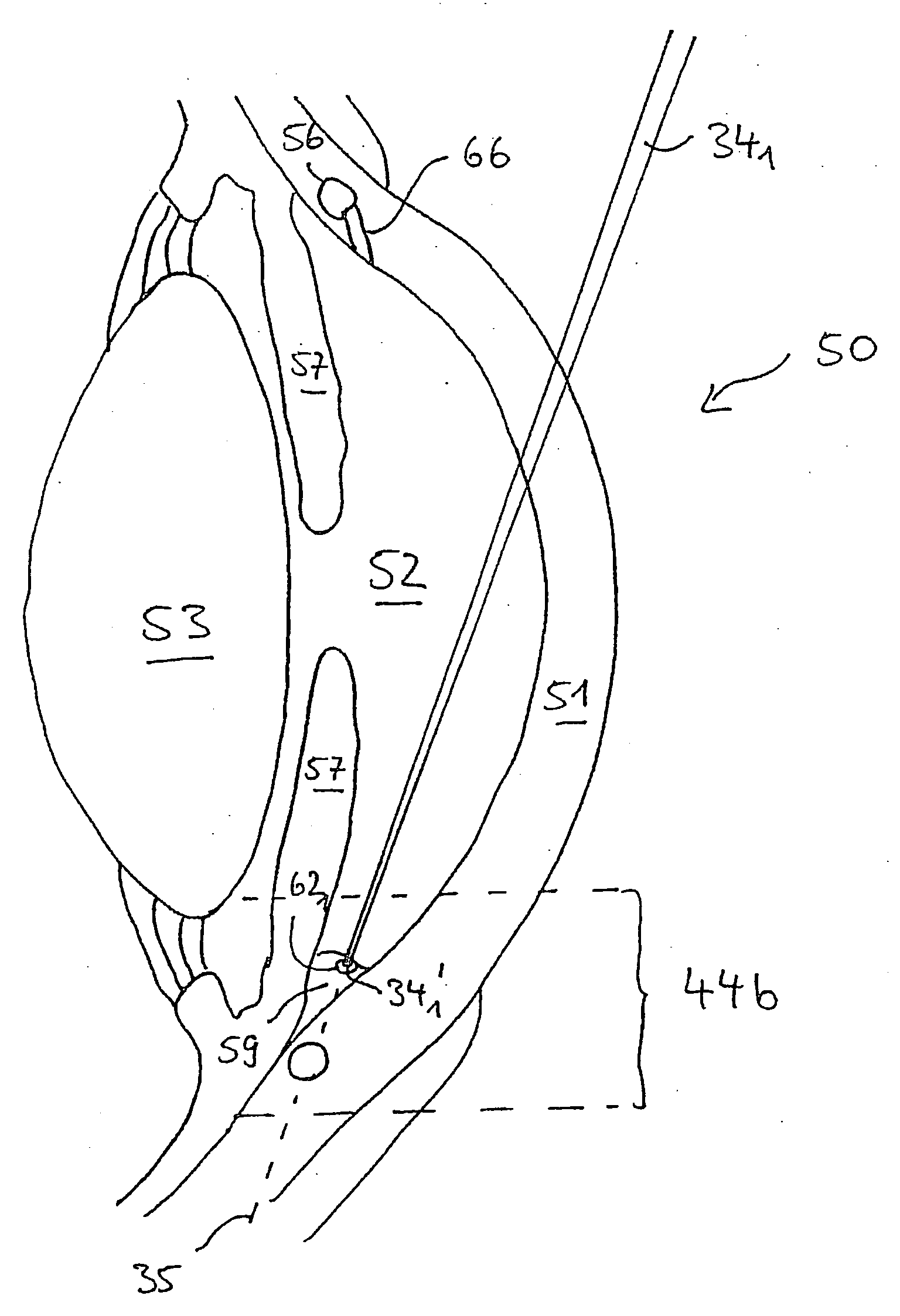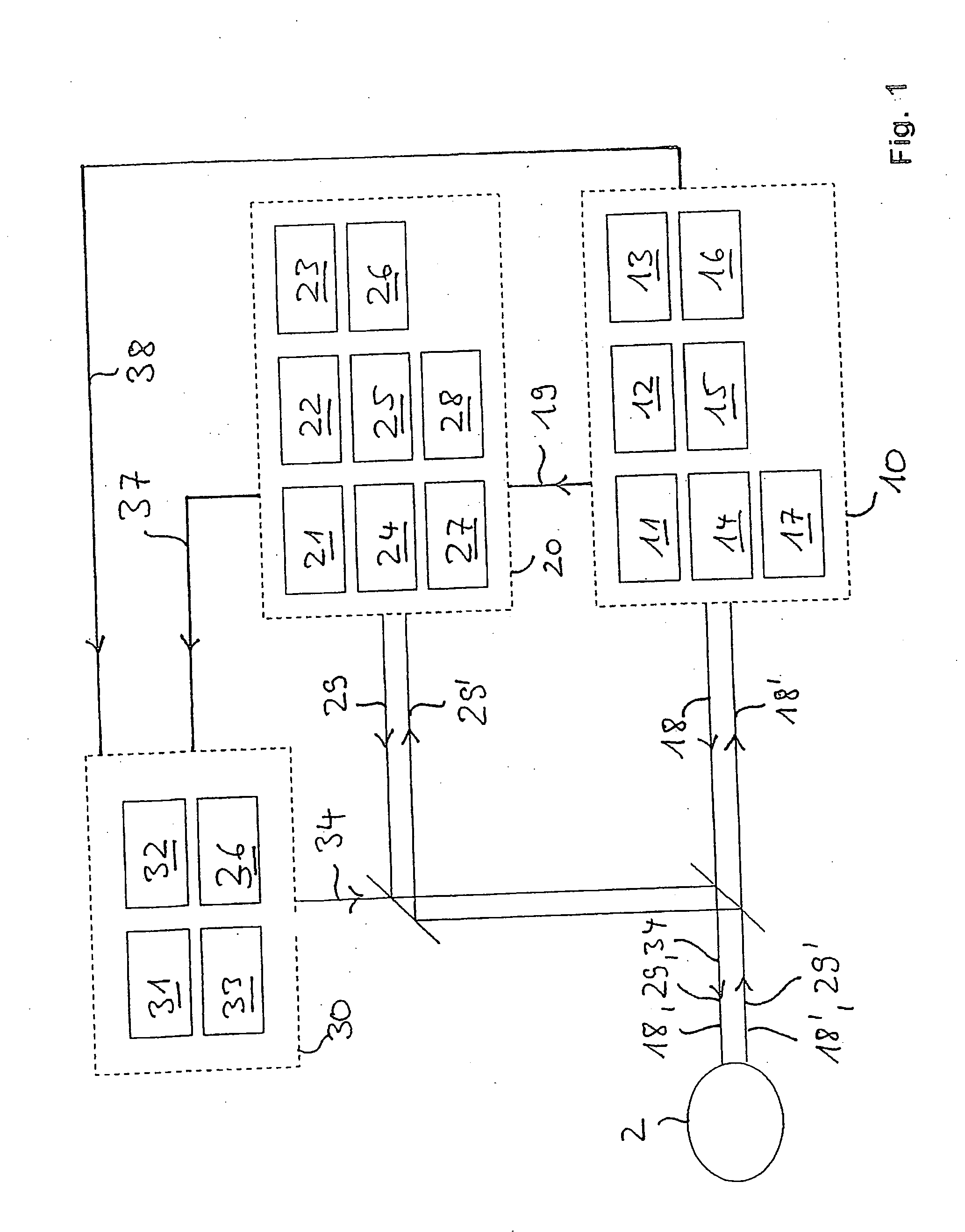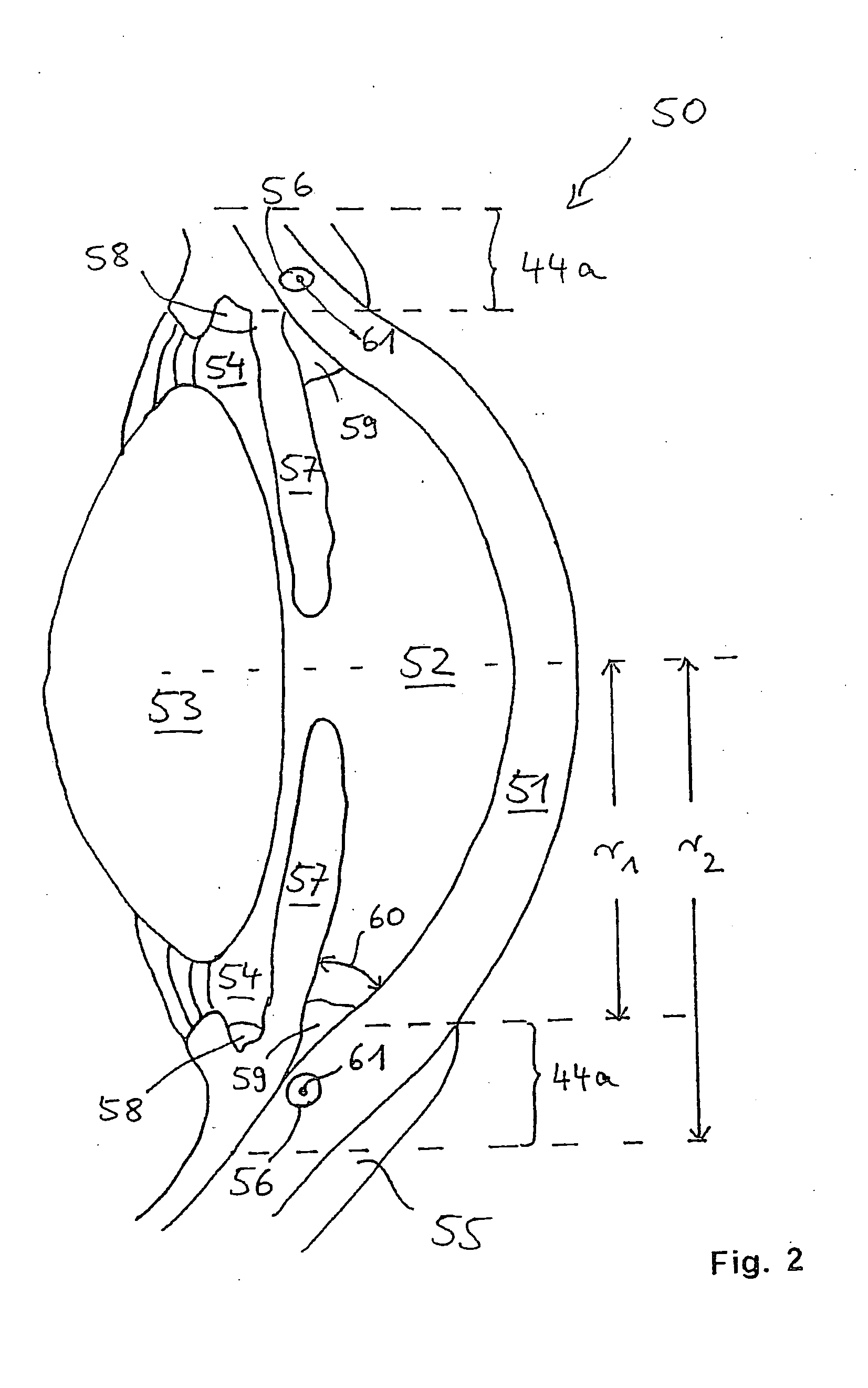Systems and methods for treating glaucoma and systems and methods for imaging a portion of an eye
a technology of glaucoma and system and method, applied in the field of system and method for treating glaucoma in the eye, can solve the problems of increased intraocular pressure, intraocular pressure, vision loss, etc., and achieve the effect of accurately monitoring the course of surgery, avoiding damage to these portions, and reducing the acquisition time for oct-image acquisition
- Summary
- Abstract
- Description
- Claims
- Application Information
AI Technical Summary
Benefits of technology
Problems solved by technology
Method used
Image
Examples
Embodiment Construction
[0046]FIG. 1 schematically illustrates a system 1 of an embodiment according to the present invention for performing embodiments of methods according to the present invention. The system 1 is adapted to treat glaucoma in an eye 2 of a patient. The system 1 comprises an optical microscopic apparatus 10, an optical coherence tomography (OCT) apparatus 20, and a laser treatment apparatus 30.
[0047]Information regarding the general construction and details about optical elements of such a system are described in the European patent application EP 0 697 611 A2 the full content of which is incorporated by reference into this application. However, the inventive system 1 additionally comprises elements and devices for controlling the system 1 as set forth below.
[0048]The optical microscopic apparatus 10 comprises a light source 11 for producing a light beam 18 for illumination of at least a part of the eye 2 for which the light source also comprises illumination optics. A light beam 18′ eman...
PUM
 Login to View More
Login to View More Abstract
Description
Claims
Application Information
 Login to View More
Login to View More - R&D
- Intellectual Property
- Life Sciences
- Materials
- Tech Scout
- Unparalleled Data Quality
- Higher Quality Content
- 60% Fewer Hallucinations
Browse by: Latest US Patents, China's latest patents, Technical Efficacy Thesaurus, Application Domain, Technology Topic, Popular Technical Reports.
© 2025 PatSnap. All rights reserved.Legal|Privacy policy|Modern Slavery Act Transparency Statement|Sitemap|About US| Contact US: help@patsnap.com



